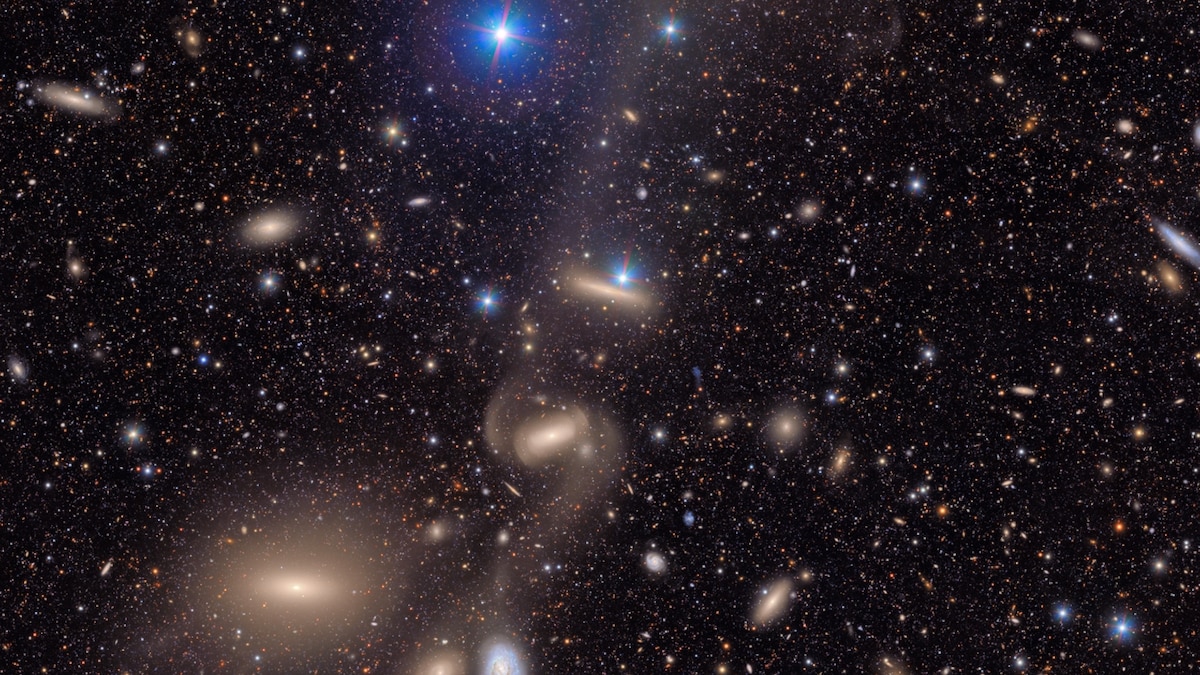
These are first deep-space images from the Vera Rubin Observatory
How did your country report this? Share your view in the comments.
Diverging Reports Breakdown
These are first deep-space images from the Vera Rubin Observatory
The Trifid Nebula is a bright, colorful cloud of gas and dust about 5,000 light-years away in the constellation Sagittarius. The Lagoon nebula provides scientists with a great place to study the earliest stages of star formation. The almost 5-gigapixel image combines 678 exposures taken in just 7.2 hours of observing time, and was composed from about two trillion pixels of data in total. No other observatory is capable of producing an image of such a wide area so quickly and with this much depth. Over ten years, Rubin Observatory will take millions of images and will image each place in the sky, including this one, about 800 times.
This almost 5-gigapixel image combines 678 exposures taken in just 7.2 hours of observing time, and was composed from about two trillion pixels of data in total. No other observatory is capable of producing an image of such a wide area so quickly and with this much depth.
The Trifid Nebula (also referred to as Messier 20) is a standout in the sky. It’s a bright, colorful cloud of gas and dust about 5,000 light-years away in the constellation Sagittarius. What makes it especially striking is the combination of features packed into one place: a glowing pink emission nebula, a cool blue reflection nebula, and dark dust lanes that split it into three sections—hence the name “Trifid.” Inside, new stars are forming and blasting out strong winds and radiation, carving up the gas around them. It gives us a dramatic glimpse at how massive stars shape their surroundings even as they’re being born.
Below the Trifid Nebula in this image is the Lagoon Nebula (or Messier 8), another vibrant stellar nursery glowing about 4,000 light-years away. You can actually spot the Lagoon with just a pair of binoculars or a small telescope. At its heart is a cluster of young, massive stars—their intense radiation lights up the surrounding gas and shapes the swirling clouds into intricate patterns. The Lagoon nebula provides scientists with a great place to study the earliest stages of star formation—how giant clouds collapse, how star clusters take shape, and how newborn stars start to reshape their environment.
This expansive image of Trifid and Lagoon together exposes an intricate web of dust lanes and star clusters that make this part of the Milky Way come alive with cosmic activity. The exquisite detail in the structure of the nebulosity shown here demonstrates the exceptional quality of Rubin’s entire system—from its light-collecting power, to its sensitive camera, to its efficient data transfer and processing system.
Over ten years, Rubin Observatory will take millions of images and will image each place in the sky, including this one, about 800 times. Every time we look at the Universe in a new way, we discover new things we never could have predicted—and with Rubin we will see more than we ever have before.
The image was captured by Rubin Observatory using the 3200-megapixel LSST Camera—the largest digital camera in the world. We invite you to zoom in and explore the details in this unique image!
Image by NSF-DOE Vera C. Rubin Observatory
